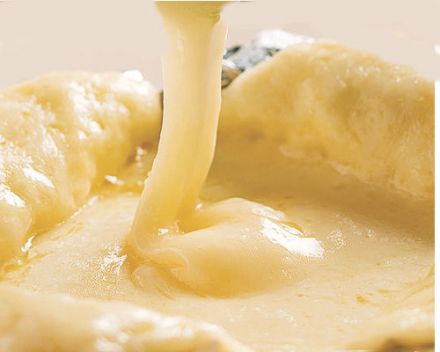 |
All about Brie de Melun > From the market to your plate
The INAO label is a guarantee of origin and quality. The bloomy white rind should be marked with red or brown streaks or patches. The curd should be an even golden yellow.
It should feel supple and elastic, but not soft.
It should have a strong scent of its terroir.
The flavor should be fruity with good bouquet. Refuse any with a grayish, uneven or overly red rind, or any cheese in which the curd detaches from the rind. Smell and refuse any with a scent of ammonia.
Keep in a cool, aerated dark place with no drafts. Cover with a damp cloth to prevent it from drying out. Place in the vegetable crisper of the refrigerator, wrapped in wax or parchment paper.
Simply take it out 45 minutes before serving so that the room temperature restores all its flavor and refinement.
Its fruity flavor makes it a must on any balanced cheese platter. It is presented on its own on a straw mat. Best paired with country bread.
Brie de Melun is usually enjoyed at the end of a meal. It is also used in regional specialties such as “croûte au brie”:
Combine 125 g (4 oz.) Brie with 100 g (3 oz.) butter, salt and pepper. Place the mixture between two slices of white bread, buttered on the outside. Place in an ovenproof dish and brown for about 5 minutes. Serve with a well-dressed green salad.
Choose a lively, full-bodied red Burgundy or Côtes du Rhône with good bouquet. More generally, any light red or country wine makes a good accompaniment to brie.

-

 Recipes
Recipes
-

 Products
Products
-

 Entertaining
Entertaining
-

 Chefs
Chefs
-

 Hints & Tips
Hints & Tips
-

 Glossaries
Glossaries








